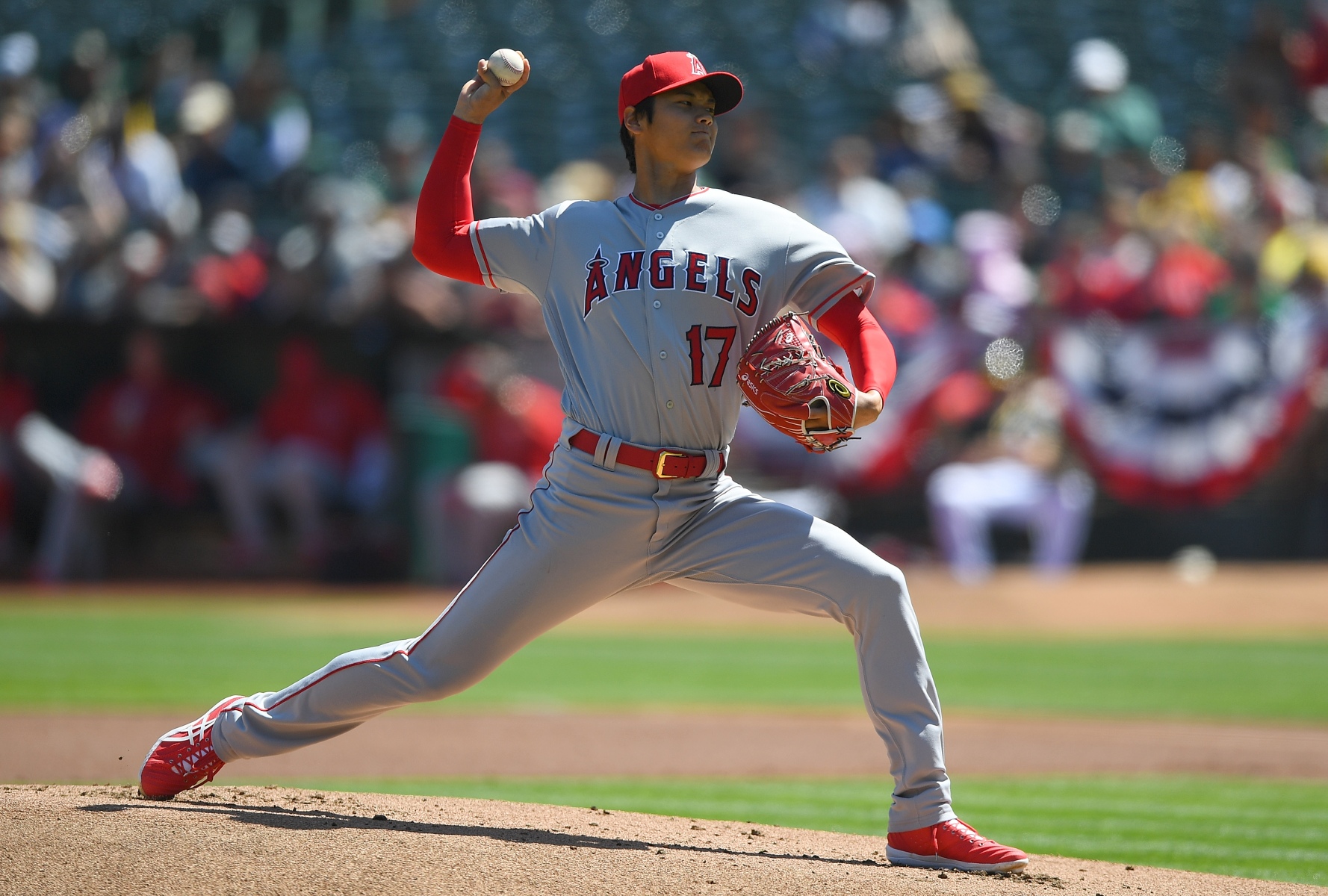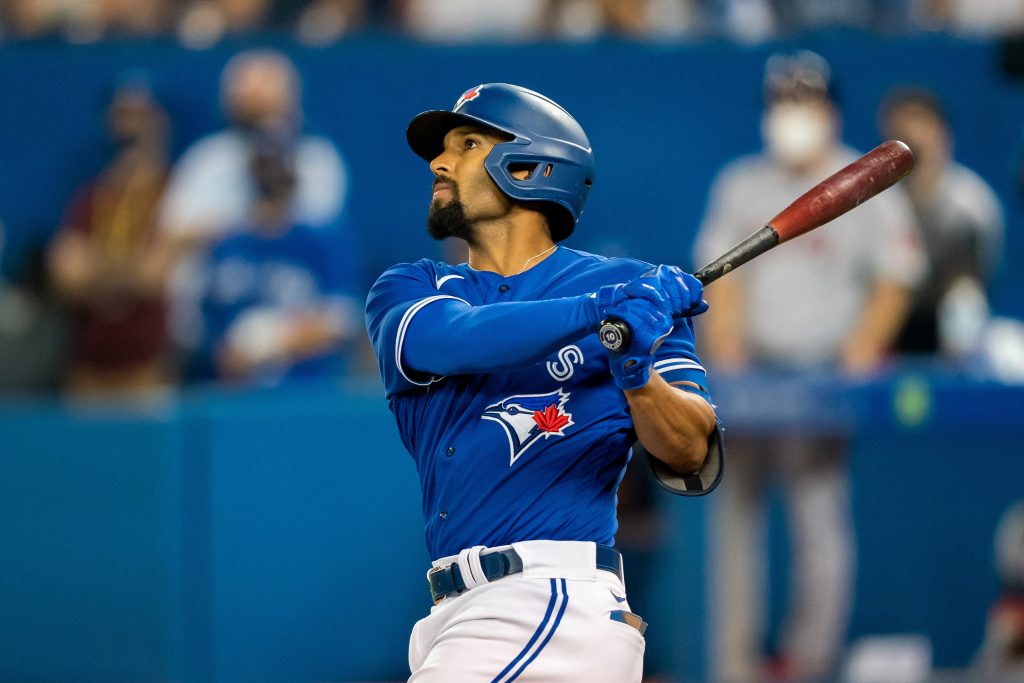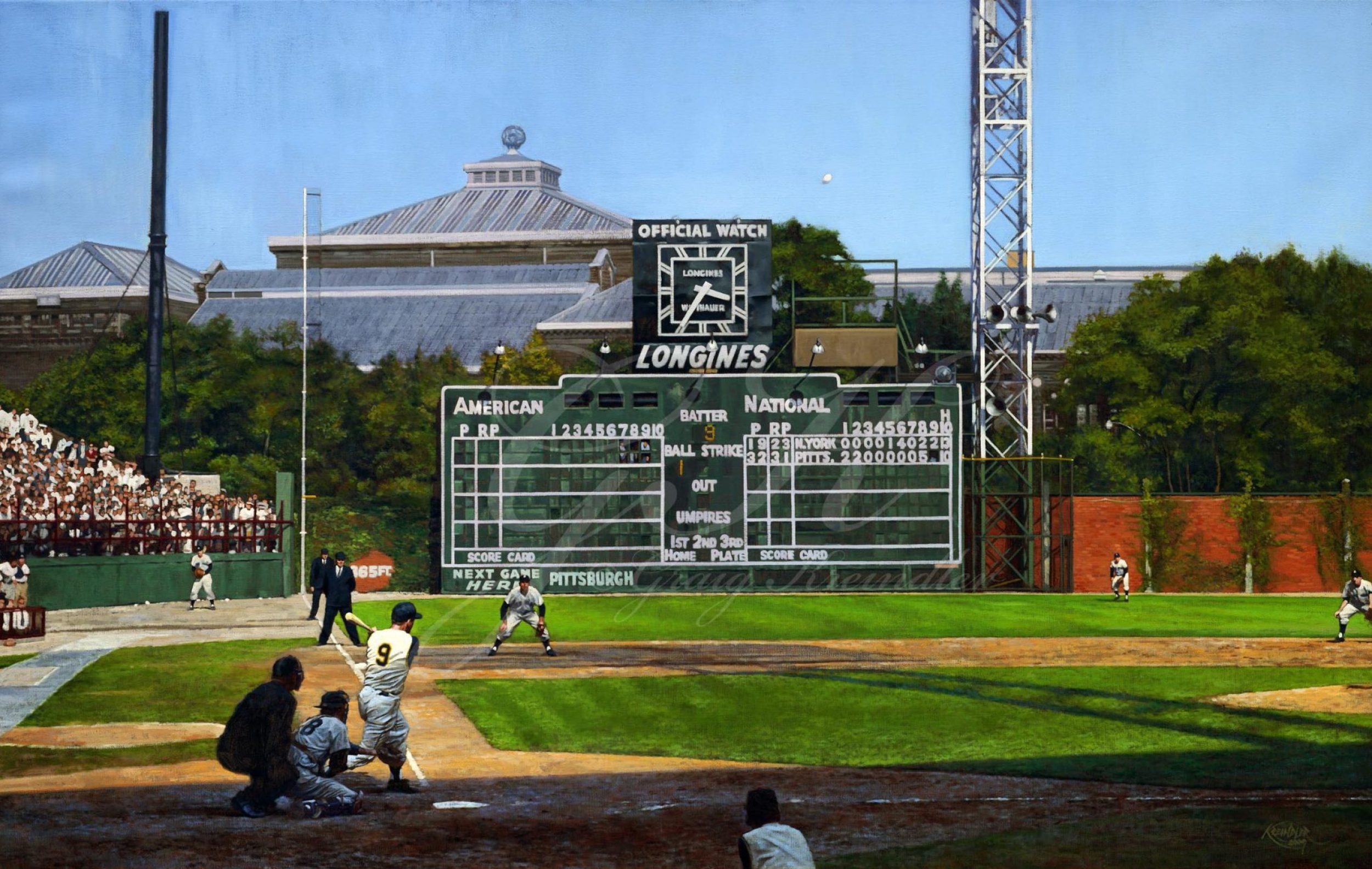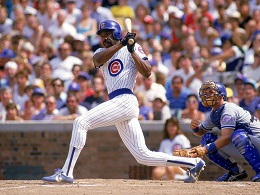Featured Photo Above:
“Fickle Fate at Forbes” by Graig Kreindler

Baseball History Comes Alive Now Ranked As a Top Five Website by Feedspot Among All Baseball History Websites and Blogs!
(Check out Feedspot's list of the Top 35 Baseball History websites and blogs)
Guest Submissions from Our Readers Always Welcome! Click for details
THE BASEBALL HISTORY COMES ALIVE BLOG
Please note: As we compose new blog entries, we will now send each one out to all our subscribers as we post them. Here’s a link to see the entire Blog Archives -GL
September 24, 2021
[Ed. Note: Today, Mark Kolier asks us to put on our thinking caps as he makes a strong case that it’s time for MLB to create a new MOP Award, going to the Most Outstanding Player. As such, he draws a distinction between the most outstanding season and the most valuable season. It’s hard to argue with the points he makes. He convinced me, but see what you think! -GL]
New Blog Topic:
MLB Should Create an “MOP Award”: Most Outstanding Player
In 1987 Hall-of-Famer Andre Dawson (featured above) then of the Chicago Cubs, hit 49 home runs, drove in 137 runs, batted .287, and won both the Silver Slugger and Gold Glove. He was named MVP of the National League. The Cubs finished sixth in the National League East – last place. The argument then and still today is – the Cubs could’ve finished last without him!
Hall-of-Famer Ralph Kiner never won an MVP award but was a highly productive player hitting 369 career home runs in ten seasons. His best year was 1951 when his 42 home runs drove in 137 (just like Andre Dawson did 36 years later) and hit .305. Kiner held out in early 1952, his output having previously earned him

$90,000 in annual salary, at the time the highest in the league. Pirates General Manager Branch Rickey decided the figure should be cut by 25 percent. Kiner, after a three-week holdout in spring training, ended up taking a 15 percent pay cut and played for $76,500. The Pirates finished seventh, just ahead of the Cubs. This is unimaginable today.
2021: What a Season!
The 2021 baseball season, conducted during a global pandemic, has provided some amazing individual performances. From Salvador Perez’s shattering of the record for home runs for a catcher, to Shohei Ohtani’s unprecedented combination of pitching and hitting prowess, not to mention Marcus Semien’s tremendous season as he prepares to enter free agency. All three of those players should be in contention for what I am calling a new ‘Most Outstanding Player’ award. This season, the American League MVP should go to Semien’s teammate, Vladimir Guerrero Jr., who is close to achieving a Triple Crown, whether the Blue Jays make the playoffs or not.
Is the Traditional Triple Crown Still Relevant?
After 90 years, is the Triple Crown award still really that important? After all, two of the three components – batting average and runs batted in – are seen with less flattering eyes than was the case 30 or more years ago. Yet a Triple Crown with home runs, on-base percentage, and OPS+ is, well, messy and a bit confusing. WAR is a very useful statistic but completely derivative, making it not as relevant in a conversation about who wins the Triple Crown. For history’s sake, I say – Yes, the major league Triple Crown is something fans keep track of and remember, and so it remains important.
WAR is a very useful statistic but completely derivative, making it not as relevant in a conversation about who wins the Triple Crown. For history’s sake, I say – Yes, the major league Triple Crown is something fans keep track of and remember, and so it remains important.
For the record, through September 20, Vlad Jr. would win the Triple Crown of home runs (he’s tied right now), on-base percentage, and OPS+. He’s ten RBIs

short of the current league leader Salvador Perez (with whom he’s tied for the home run lead), and he leads the major leagues in batting average. Shohei Ohtani is third in home runs, is batting .255, and trails the RBI leader by more than 20. Oh, but what about the pitching? Ohtani has been nothing short of excellent on the mound! The combination of his hitting and pitching makes his bWAR number an incredible 8.0.
For comparison, among the best bWAR seasons of all-time, Hall-of-Famer Walter Johnson had a bWAR of 16.6 in 1913 and Babe Ruth a bWAR of 14.2 in 1923 – after he stopped pitching. Johnson had modest but ‘good for a pitcher’ batting stats in 1913. He did go 36-7 with a 1.15 ERA and won the MVP – sort of, since there was not an official MVP award given out until 1931.
The ‘Romantic’ MVP Award!
There’s something romantic and simple about leading the league in home runs, RBIs, and batting average. No matter what, winning the MVP should go to the most valuable player on the team – the one without whom the team had a much lower chance of winning a playoff spot. The Blue Jays still have a shot and would not be there without Vlad Jr. The Angels without Ohtani might have finished last below the lowly Texas Rangers. Instead, they will finish second-to-last in the American League West. How is that a most valuable player season? If Mike Trout was playing and the Angels were battling for a playoff berth, wouldn’t Mike Trout have been more valuable to his team?
Of course, that’s a bit unfair. Does Marcus Semien’s season take votes away from

Vlad Jr. since you can ask, “Where would the Jays be without Semien?” Having Trout all season without Ohtani would have the Angels probably right where they are now. The Jays without Marcus Semien? Well, they would still be a good team, but we’ll never know.
MLB should create another award – the MOP: Most Outstanding Player, and then both Shohei Ohtani and Vlad Guerrero Jr. would be honored and remembered for their historic seasons!
Mark Kolier
As always, we enjoy reading your comments
Here’s a link to see the entire Blog Archives



For proof that this may be a worthy idea one need look no further than Baseball America’s Major League Player of the Year Award (inaugurated in 1998), Baseball Digest’s Player of the Year Award (since ’69), and The Sporting News’ Player of the Year (since 1936), to name a few but not all of such honors. Sometimes these trophies wind up in the hands of an MVP, but by no means always.
I don’t know; does it seem that we already have enough such awards to keep everybody reasonably satisfied?
I agree with Michael that we don’t need another award in baseball. MVP history has at times treated MVP as MOP (e.g.— Hank Sauer in 1952 with a .500 Cubs team and Ernie Banks in ‘58 and ‘59 on two losing Cubs teams).
Mike Trout has won 3 on mediocre Angels teams. So,
don’t necessarily think MVP
has gone to player on winning teams. Seems like splitting hairs to have to add MOP to the roster. In reality, an argument can be made that an MVP by definition contributes to his team being better than if he was not on the team.
Here’s the majority of my e-mail to Chad Finn of the Boston Globe following a recent column of his:
Chad –
Your note about Guerrero vs Ohtani for American League MVP in a recent column (“Red Sox may not have won the trade deadline…”) points out the need for two separate awards – Most Valuable Player and Player of the Year. Without a doubt, Ohtani is the America League Player of the Year. He has had a terrific season and brings people to the ballpark. Fans come out to see him play rather than seeing the Angels play. The excitement he generates, whether on the mound or at bat, is fantastic and is great for the game. Yet, his team is 72-78 as I write this. They are 17 games out of first place in the AL West and, if my math is correct, 12 games behind the Blue Jays for the second AL Wild Card spot. How has his contribution to the team made him the most valuable player in the league? How does one measure his value? Would the Angels be worse without him? Perhaps, but having him in the lineup has made a mediocre team more fun to watch, but has not produced a great improvement in the standings. They
also finished fourth in the AL West last year.
Vlad Guerrero is having a monster season, and as you point out, has a legitimate chance to win the triple crown. Fans come to the ballpark to see him play, but they also come to see the team play. After a slow start, virtually every game the Blue Jays have played has mattered in the race to the post-season. Taking him out of the Blue Jay’s lineup would leave a big hole to fill. Granted, the Blue Jays are a strong team, but removing his .320 batting average, 46 home runs and 105 RBI would leave a significant hole to fill.
My argument for two awards is that the Most Valuable Player should be awarded to a player who has contributed greatly to his team’s success. The Player of the Year should be given to a player who has had an outstanding season. Would it be possible for one player to win both awards? Absolutely.
The 1941, 1958 and 1959 seasons immediately came to mind.
1941 is the season in which Joe DiMaggio had his 56 game hitting streak and Ted Williams hit .406. Their stats that year were amazing:
Ted Williams – hit .406 had 37 home runs, drove in 120 runs walked 147 times had an on base percentage of .553 and stuck out only 27 times in 606 plate appearances
Joe DiMaggio – hit .357 had 30 home runs, drove in 125 runs walked 76 times had an on base percentage of .440 and stuck out only 13 times in 622 plate appearances
The Red Sox finished in second place, 17 games behind the Yankees, who beat the Dodgers in 5 games to win the World Series.
DiMaggio was the AL MVP (291 points/15 1st place votes). Williams finished second (254 points/8 1st place votes). Bob Feller finished third (174 points/0 1st place votes).
Had there been two awards Williams may have won the Player of the Year award… or he may not. It would have been fun to argue the point.
In 1958 and 1959 Ernie Banks had tremendous individual seasons and won the National League MVP both years. The Cubs finished 5th both years; 20 games behind the Milwaukee Braves in ’58 and 13 games behind the LA Dodgers in ’59. Had there been two awards in 1958 it is likely that Ernie Banks’ outstanding individual season would have been recognized as Player of the Year and perhaps Henry Aaron, whose team won the National League in 1958, may have been the MVP. It is interesting to note that Aaron finished 3rd in the MVP voting in 1958 and did not get a single 1st place vote. Banks got 16 1st place votes.
Had there been two awards in 1959, Banks would likely have been Player of the Year again and either the Henry Aaron or Eddie Matthews, both who had monster seasons for the Braves, who finished 2 games behind the Dodgers, would have been MVP. Again, it would have been fun to argue the point.
I am sure I can dig up other seasons to make my point.
Steven, thanks for your detailed argument. You did it way better than I was able! At the root of it all is the idea that there’s room for more. More awards, more players in the HOF will not ruin or dilute any player’s accomplishments.
These arguments have been taken into consideration, met and satisfied for many years, beginning with The Sporting News’ Player of the Year Award (1936 to present), to which was added Baseball Digest’s Player of the Year Award (1969 to date), then Baseball America’s Player of the Year Award (1998-2020). In the 85 years that TSN’s award has been conferred, it was taken home 25 times by somebody who was NOT the reigning MVP, including 1941, 1958 and ’59.
The proponents here keep saying, “Had there been two awards in (year), but in fact there were two, later three, and now four awards given, year after year after year. Clearly, this seems to be a solution in search of a problem — doesn’t it?